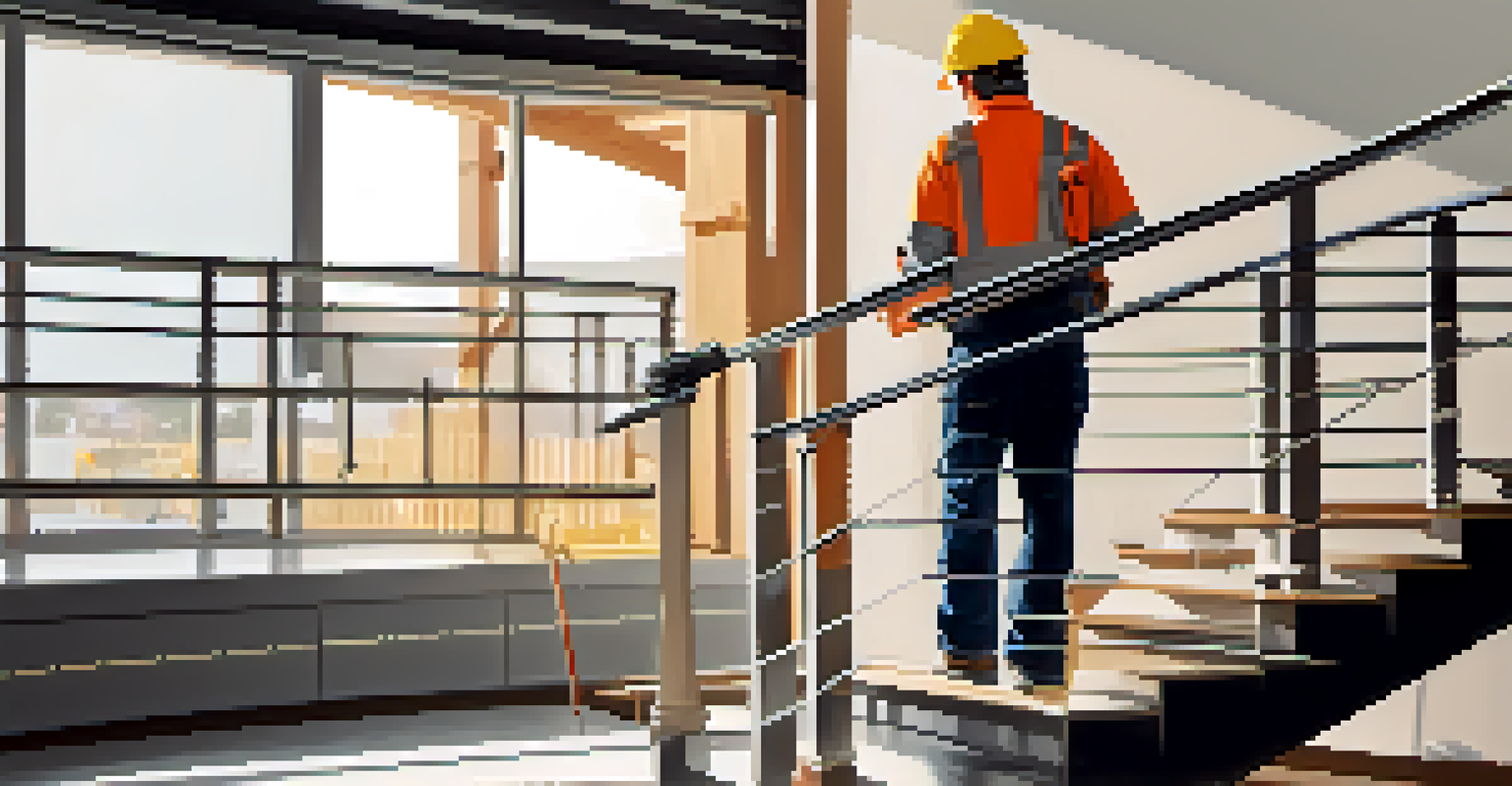Modifying Stairs: Best Practices for Safety and Access

Understanding the Importance of Stair Modifications
Stairs can pose significant safety risks, especially for children and the elderly. It's crucial to understand how modifications can mitigate these risks while improving accessibility. A well-designed staircase not only enhances the aesthetic of your space but also ensures that everyone can navigate it safely.
The staircase is a place where we rise above the ground, but it should never be a place where we fear to tread.
Consider a scenario where a family member uses a wheelchair or has mobility issues. Without appropriate modifications, navigating stairs can be a daunting challenge. This highlights the importance of creating a welcoming environment that accommodates different needs.
By examining the various aspects of stair design, such as width, height, and materials, we can appreciate the profound impact these elements have on safety and accessibility. Ultimately, modifying stairs is not just about compliance with building codes; it's about fostering inclusivity.
Assessing Your Current Staircase Design
Before diving into modifications, it's essential to thoroughly assess your existing staircase. Look for potential hazards, such as loose railings, uneven steps, or inadequate lighting. Identifying these issues will help prioritize what needs to be addressed.

Take a step back and visualize how the staircase is used daily. Are there areas where people struggle? This might be a good time to gather feedback from family members or visitors who regularly use the stairs. Their insights can provide invaluable information about accessibility challenges.
Safety Modifications Are Essential
Modifying stairs enhances safety and accessibility for individuals with mobility challenges.
Remember, not all staircases are created equal. Each design has unique characteristics that may influence the type of modifications necessary. A clear understanding of your current setup will lead to more effective and tailored improvements.
Choosing the Right Materials for Stair Modifications
Selecting the right materials can significantly affect the safety and usability of your staircase. For instance, non-slip surfaces are crucial in preventing falls, especially in high-traffic areas. Options like textured rubber or treated wood can provide the necessary grip.
Accessibility is not just a feature, it's a fundamental human right.
In addition to safety, consider the durability of the materials. Stairs endure a lot of wear and tear, so investing in high-quality options can save you money and hassle in the long run. Think about materials that can withstand daily use without losing their appeal.
Lastly, aesthetics matter too! Choose materials that complement the overall design of your home while enhancing functionality. A well-thought-out combination of safety and style can make your staircase a focal point rather than just a means of getting from one floor to another.
Incorporating Handrails for Enhanced Safety
Handrails are one of the most critical safety features of any staircase. They provide support and stability, especially for those who may have difficulty navigating stairs. Installing handrails on both sides of the staircase is recommended for maximum safety.
When considering handrail height, keep in mind the users' needs. Standard handrail height ranges from 34 to 38 inches, but adjustments may be necessary based on the users' height or mobility challenges. Ensuring that handrails are comfortable to grasp can make a significant difference.
Choose Durable, Non-Slip Materials
Selecting appropriate materials is crucial for preventing falls and ensuring long-lasting use.
Don’t forget about the material of the handrails as well. Opt for sturdy materials that can withstand force and are easy to grip. A well-placed, robust handrail can be a game-changer in enhancing the safety of your staircase.
Implementing Proper Lighting for Staircases
Good lighting is essential for any staircase, as it helps prevent accidents and enhances visibility. Consider installing lights that illuminate each step, ensuring that users can see where they are placing their feet. This is especially important in homes with older adults or young children.
Motion sensor lights can be a fantastic addition, turning on automatically when someone approaches the staircase. This feature not only adds convenience but also encourages safe navigation at all hours without fumbling for light switches.
Additionally, think about the color temperature of your lighting. Warm, bright lights can create a welcoming atmosphere, while ensuring that shadows are minimized, making it easier to spot any potential hazards along the way.
Creating a Clear Pathway on Staircases
A clutter-free staircase is vital for safety. Ensure that the pathway is clear of obstacles such as shoes, toys, or any items that could cause someone to trip. Establishing a routine of keeping stairs tidy can help maintain a safe environment.
Consider using visual cues to enhance awareness of each step. For example, placing contrasting colors or textures on the edges of each step can aid visibility. This is particularly helpful for individuals with visual impairments.
Consult Professionals for Best Results
Engaging experts can provide tailored solutions that improve safety and comply with regulations.
Encouraging family members to be mindful of their surroundings is also key. Everyone should be aware of the importance of maintaining a safe pathway to prevent accidents, fostering a collective responsibility for safety.
Consulting Professionals for Stair Modifications
While DIY projects can be rewarding, consulting professionals for stair modifications is often wise. Experts can provide valuable insights into design, safety codes, and best practices that might not be immediately apparent. This can save you time, money, and frustration in the long run.
Consider hiring a contractor who specializes in home modifications, especially those focusing on accessibility. They can assess your staircase and recommend tailored solutions that align with your specific needs.

Additionally, don't hesitate to seek advice from occupational therapists or accessibility consultants. Their expertise can help ensure that the modifications you make truly enhance safety and accessibility for all users.